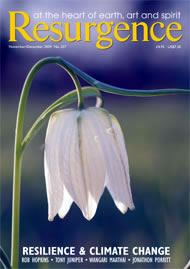What is life? Which forces control Nature? Why do different living creatures look and behave as they do? Where does humanity fit in? Today’s debate about people’s place in the world is as highly charged as it was when Charles Darwin first published his evolutionary theory, 150 years ago. Climate change, shrinking biodiversity and global pollution are challenging everyone to try to establish a more sustainable working relationship between the planet, life and people, especially at a time when the human population is growing by an average of 211,000 people every day.
Darwin’s writings have inspired generations of writers, scientists, philosophers and environmentalists – including me. What on Earth Happened? The Complete History of Planet, Life and People from the Big Bang to the Present Day, published in 2008, was my attempt at creating a more connected perspective on the past. It is a single-volume history of the world that dovetails the growth of human civilisations with evolutionary biology, modern science with prehistoric art and the rise of world religions and the irrepressible forces of Mother Nature.
While writing this book I realised it might be possible to take the concept of holistic history a stage further. What on Earth Evolved? 100 Species that Changed the World, published this October, is a follow-up volume that looks at the past from the perspective of the most successful life forms ever to have lived. They range from the first genetic molecules at the dawn of life in the oceans 3.5 billion years ago to many of the most prolific species alive today.
Looking at the past through the lens of myriad forms of viruses, bacteria, fungi, fish, plants, flowers, reptiles, mammals and humans paints a dramatically different picture of history – both human and natural. Gone are the usually unavoidable prejudices that glorify one continent, religion or culture over another. See the past from the species’ perspective, not the individual human point of view, and the impact of life on Earth takes on a fresh, new meaning.
The first section profiles fifty of the most successful species that evolved in the wild, according to the laws of natural selection. They include influenza, smallpox, rhizobia, cyanobacteria, slime moulds, corals, trilobites, earthworms, dragonflies, tyrannosaurus, mosquitoes, oaks, bamboos, honeybees and ants. Our own species, Homo sapiens, is included, of course, as are our direct ancestors Homo erectus and the first walking chimpanzee Australopithecus.
The second fifty species feature those that have thrived in a world dominated by the rise of human civilisations over the last 10,000 years. Rice, wheat, maize, sugar cane, rabbits, cats, dogs, rubber, cotton, cows, sheep, roses, apples, poppies and cannabis are all living things that have, in some way, been artificially selected because they are pleasing to humans. All 100 species have extraordinary stories to tell, and are ranked at the back of the book in a table of overall influence from number 1 to 100.
What surfaces is an extraordinary wrestling match. Artificial selection tailors a thin sliver of natural species to suit humans, while natural selection champions the broadest possible ecological diversity. This epic spat has become the defining hallmark of our age, a period defined by geologists as the Anthropocene.
Species profiled in the first half are entirely natural, mostly founded on sexual reproduction and inheritance, a system that harbours no sentimentality for the survival of any one species over another. Diversity is its ultimate measure of success. Its simplicity lies in its self-organising, self-correcting symmetry – infinitely adaptable, remarkably robust.
The second fifty species are fashioned out of the rational, centralised, problem-solving human mind – replete with all the inevitable unintended consequences of rational thought. In this mostly sexless system, biodiversity is ruthlessly suppressed. Species that enhance humanity’s welfare are vigorously encouraged while those that threaten it are destroyed. Living things that look symmetrical, taste good or provide shelter, warmth, transport or other benefits are bred into monocultures that work for humanity. In this system cloning, grafting and selective breeding provide the reproductive plumbing necessary to focus Nature’s gene pools, ensuring that the fittest don’t survive: just those most useful to humankind.
It is easy to forget that everyday human conduct is dominated by humanity’s constant battle against natural selection. Think how normal it seems to apply a weed killer to garden grass, buy a bunch of cut roses from Kenya, drink coffee from sun-drenched South American plantations, or for a doctor to prescribe a course of antibiotics to relieve a sore throat. Each activity belongs to humanity’s war on Nature.
The conclusion is as chilling as it is humbling. In the world of artificial selection humanity’s survival will always, at some level, be dependent on Nature. Yet, in the wild, Nature has absolutely no need for humans.
What on Earth Evolved? 100 Species that Changed the World is published by Bloomsbury at £25, ISBN 9780747599623. www.whatonearthevolved.com/








